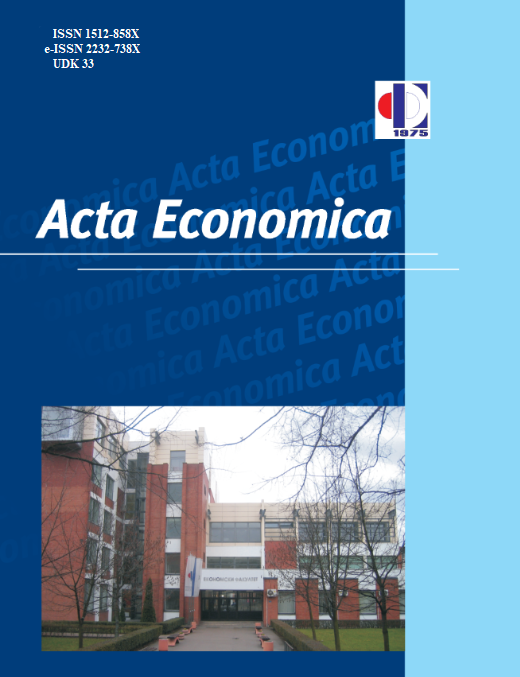ENERGY ACCESS AND HOUSEHOLD INCOME IN SUBSAHARAN AFRICAN COUNTRIES
DOI:
https://doi.org/10.7251/ACE1730099AAbstract
This study empirically examined the energy access and
household income in Sub-Saharan African countries between
1990 and 2015. The study employed five variables:
energy access, per capita income, energy price, FDI and
trade openness, as well as panel unit root test using two
criteria to test stationarity. Panel cointegration test was
also conducted to test long-run cointegration between the
variables employed. Panel granger causality test was employed
to check the degree of causality between the dependent
and explanatory variables and Auto Regressive
Distributive Lag method of estimation was employed to
check the long-run and short-run relationships between the
variables. The results of the panel unit root test from the
LLC and IPS methods show that the order of integrations
is mixed with some of the variables being stationary at
levels (household income, Foreign Direct Investment and
Trade Openness) and first difference (Energy Access and
Fuel Price) at the same time. The result of Pedroni cointegration
test indicated the bivariate long-run cointegration
equation between the variables employed except for
EA and GDPPC. The panel granger causality test revealed
that there is causality between these three variables (EA,
GDPPC and FUELP) and the direction of causality only
flows from these variables to energy access. The ARDL
result revealed that all explanatory variables accounted
for 60% variation of energy access in SSA. However,
the study made the following policy implications: energy
policy needs to be orientated in favor of expanding the
supply of energy to reach an enhanced degree of sustainable
economic growth and development, and governments
in this region can subsidize energy products to increase
its consumption and promote the welfare of their citizens.

